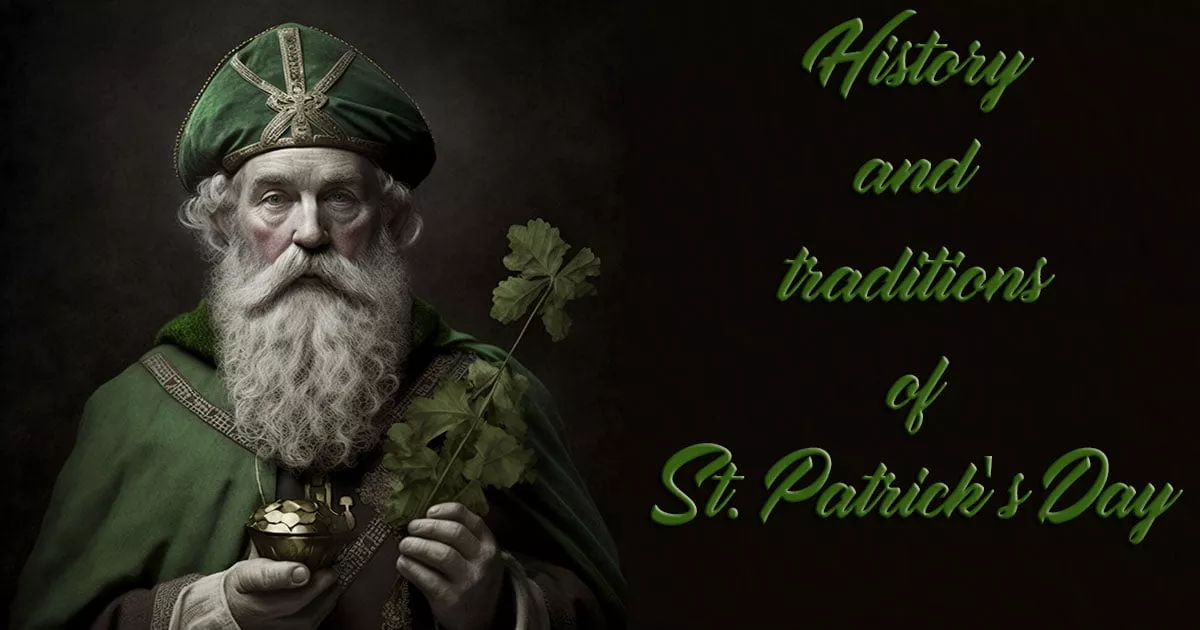

St. Patrick’s Day, celebrated every year on March 17th, is a beloved holiday around the world. The day is filled with lively parades, vibrant green attire, and an outpouring of Irish pride. While the holiday has become synonymous with joyous festivities, its origins and traditions are deeply rooted in the history and culture of Ireland. In this article, we will explore the history of St. Patrick’s Day and the customs that have evolved over time.
Born in Roman Britain around the 4th century, St. Patrick’s early life was marked by adversity. At the tender age of 16, he was kidnapped by Irish raiders and taken to Ireland, where he was forced into slavery. During his six-year enslavement, St. Patrick worked as a shepherd and turned to his faith for solace, strengthening his devotion to Christianity.
Miraculously, St. Patrick managed to escape his captors and returned to Britain, where he continued his religious education. Eventually, he felt a divine calling to return to Ireland and embarked on a mission to convert the Irish people to Christianity. Through his teachings, he established churches, schools, and monasteries across the country, playing a pivotal role in spreading Christianity and shaping the Irish religious landscape.
One of the most enduring legends associated with St. Patrick is his use of the shamrock, a small, three-leaved clover native to Ireland, as a pedagogical tool. He is said to have utilized the shamrock to illustrate the concept of the Holy Trinity – the Father, the Son, and the Holy Spirit – as three distinct entities that form one divine essence. This simple, yet effective analogy helped the pagan Irish to better understand and embrace the tenets of Christianity.
Today, the shamrock has become synonymous with St. Patrick’s Day, serving as a powerful symbol of Irish culture and heritage. The day is marked by parades, music, dancing, and an abundance of green attire, reflecting the national color of Ireland. Moreover, the celebration has transcended Irish borders and is now recognized and enjoyed by people of various nationalities around the world.
In essence, St. Patrick’s Day is not only a tribute to the life and work of St. Patrick but also a celebration of Irish identity, history, and the lasting impact of St. Patrick\’s evangelism on the nation.
The first St. Patrick’s Day celebrations took place in Ireland as a religious feast day in the 9th or 10th century. However, it was not until the early 17th century that the day was officially recognized by the Vatican as a holy day of obligation for Roman Catholics in Ireland. Initially, the day was observed with solemn religious ceremonies and quiet reflection.
St. Patrick’s Day is celebrated in numerous countries around the world, with varying degrees of enthusiasm and traditions. While it is primarily an Irish national holiday, the global Irish diaspora and the widespread popularity of Irish culture have contributed to the international appeal of the celebration. Some of the countries where St. Patrick’s Day is observed include:
Parades are a cornerstone of St. Patrick’s Day celebrations, particularly in cities with large Irish populations, such as New York City, Boston, and Chicago. These events feature an array of marching bands, bagpipers, dancers, and floats, showcasing the vibrant Irish culture and creating a festive atmosphere for all to enjoy.
Another popular tradition during St. Patrick’s Day is wearing green clothing and accessories as a symbol of Irish pride. Donning green attire also serves as a playful means to avoid being pinched by others, who may take the opportunity to tease those not wearing the iconic color.

The shamrock, a symbol strongly associated with St. Patrick and Irish heritage, is also prevalent on St. Patrick’s Day. It can be found on clothing, accessories, and decorations, serving as a visual representation of the holiday and the story of St. Patrick’s teachings.
Music and dance performances are also common during St. Patrick’s Day celebrations, highlighting the rich cultural heritage of Ireland. Traditional Irish music and dance, such as jigs and reels, allow participants to immerse themselves in the festive spirit of the occasion.
Food and drink play a significant role in St. Patrick’s Day festivities, with many people indulging in traditional Irish dishes like corned beef and cabbage or shepherd’s pie. Irish beverages, such as Guinness or Irish whiskey, are also popular choices for those looking to toast the holiday and partake in the communal celebration.
One unique and eye-catching tradition is the dyeing of rivers green, most notably in the city of Chicago. Each year, the city dyes its river green to mark the holiday, creating a striking visual spectacle that draws thousands of onlookers.

Lastly, leprechauns, the mythical creatures from Irish folklore, are often associated with St. Patrick’s Day. Depicted as mischievous, bearded men dressed in green, leprechauns have become a whimsical and playful symbol of the holiday, adding an element of enchantment to the celebrations.
St. Patrick’s Day is a time-honored celebration of Irish culture, history, and traditions. Although the holiday has evolved and expanded since its inception, the spirit of unity, heritage, and pride remains at the heart of the festivities.
As people worldwide continue to embrace St. Patrick’s Day, they don vibrant shades of green, indulge in traditional Irish food and drink, and partake in lively parades and music-filled gatherings.
This global celebration not only honors the patron saint of Ireland, St. Patrick, but also serves as a powerful reminder of the enduring strength and resilience of the Irish community, both at home and abroad. St. Patrick’s Day transcends cultural boundaries, fostering connections and promoting appreciation for the rich and diverse tapestry of Irish contributions to the world.